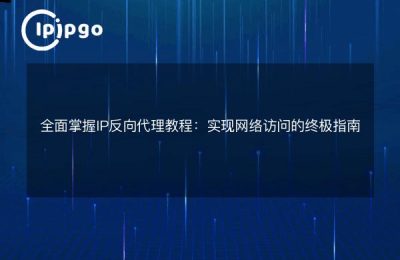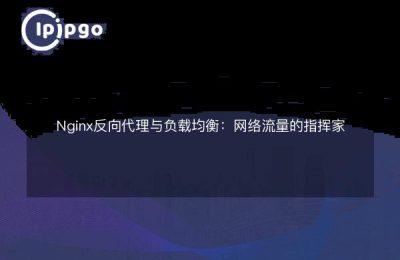
In the era of big data today, the Internet has become an indispensable part of people's lives. As one of the infrastructures of the Internet, servers play a central role. In the server, Nginx (pronounced engine-x) as a high-performance Web server and reverse proxy server, highly favored by people. Today, we will lead you to explore the configuration and use of Nx reverse proxy PHP, so that we can enjoy its charm for the network world.
Chapter 1: Meet the Nginx peeps
Nginx, have you heard of it? It is an open source and high-performance HTTP server, often used in reverse proxy, load balancing, static resource caching and other scenarios. As a "modern human browser" favorite, Nginx has a lightweight, high concurrency features, so that your website loading speed is very fast, the access experience doubled! Are you excited? Then follow the footsteps of the editor, to configure Nginx reverse proxy PHP together!
Chapter 2: Getting Ready and Starting Configuration
Before we start the configuration, we need to make sure that we have installed Nginx and PHP environment in the server. If you haven't installed them yet, it's good to prepare for them, and maybe you'll be well rewarded for your efforts!
First, let's go to the Nginx configuration folder, which is located roughly under the path "/etc/nginx/". Open the nginx.conf file and we will see many comments and default configurations. In the http block, we need to add something to let Nginx know which PHP server we want to reverse proxy to. This is shown below:
"`nginx
http {
server {
listen 80.
server_name your.domain.com;
location / {
proxy_pass http://your.php.server.
proxy_set_header Host $host.
proxy_set_header X-Real-IP $remote_addr.
proxy_set_header X-Forwarded-For $proxy_add_x_forwarded_for;
}
}
}
“`
This configuration tells Nginx to listen on port 80 and forward requests to the your.php.server server. At the same time, we set some request header information via proxy_set_header to allow the PHP server to process the request correctly. These request header information include Host, X-Real-IP and X-Forwarded-For.
Chapter 3: Restarting Nginx to Let the Configuration Take Effect
After completing the configuration, we need to restart Nginx for the configuration to take effect. Open a terminal window and enter the following command:
“`
sudo service nginx restart
“`
If there are no errors in the configuration file, Nginx will reload the configuration file and restart. At this point, you'll see some terminal output telling you whether the restart was successful or not. If everything went well, congratulations, the configuration of Nginx reverse proxy PHP is complete!
Chapter 4: Testing to see what the results are
After the configuration is complete, we can test the results through the browser. Open your browser, enter your domain name (your.domain.com) and see if it successfully accesses your PHP server. If everything is fine, you will see the page content returned by the PHP server, which signifies that the configuration and use of Nginx Reverse Proxy PHP has been successful.
Chapter 5: Turning on Load Balancing to Make Nginx More Powerful
In addition to reverse proxy, Nginx also supports load balancing. With load balancing, we can distribute requests to multiple PHP servers for high availability and performance. Below is a simple load balancing configuration example:
"`nginx
http {
upstream backend {
server your.php.server1;
server your.php.server2;
}
server {
listen 80.
server_name your.domain.com;
location / {
proxy_pass http://backend.
proxy_set_header Host $host.
proxy_set_header X-Real-IP $remote_addr.
proxy_set_header X-Forwarded-For $proxy_add_x_forwarded_for;
}
}
}
“`
In this configuration, we define two PHP servers through the upstream block, your.php.server1 and your.php.server2. Then, in the location of the server block, we change the target of the reverse proxy to backend, the load-balanced backend server.
Chapter 6: Wrapping Up and Takeaways
Configuration and use of Nginx reverse proxy PHP, through the above steps, I believe you can already easily get started! Configuration of Nginx reverse proxy PHP can accelerate the loading speed of the site to improve the user experience, but also to achieve load balancing and improve the availability and performance of the site. In the actual application, you can also according to the needs of a more complex configuration, such as caching static resources and so on. I hope that through the introduction of this article, can help to learn or use Nginx partners, so that your network world more exciting! Cheer up oh!
Finally, I would like to emphasize again, before configuration, please backup the original configuration file, so as to avoid the wrong operation leads to the website can not be accessed normally. In addition, do not panic when encountering problems, consult more documents, online information, or seek professional help. May Nginx be with you to make your online world a better place!








